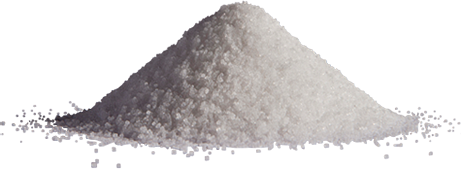SALT
Overview:
The manufacture and use of salt is nearly as old as humankind itself. Salt's use traces back to some of the earliest recorded periods of history and its preservative and restorative benefits have long been recognized. A very versatile compound, salt has multiple applications in the food, chemical and construction industries. Salt has great commercial value because it is a necessary ingredient in many manufacturing processes.1
There are two general forms of salt: unrefined and refined. The former category mainly consists of natural sea salts that have been processed using roasting or evaporation techniques. The most common application of these salts is in bathing additives and cosmetics.
Refined salt is more widely used presently, and is mainly sodium chloride. Food grade salt accounts for only a small part of salt production. The majority is sold for industrial use. A few common examples include the production of pulp and paper, setting dyes in textiles and fabrics, and the making of soaps and detergents.
Salt is used in cold weather climes in the United States and Canada as a de-icer of snowy, slushy or icy road and pavement surfaces. Salt is also used as a "softener" removing elements such as calcium and magnesium from tap water supplies.
Characteristics and Challenges:
Salt is generally free-flowing, with a large surface area. Crystalline in form, most salt is granular, but salt is available in larger particle size as rock salt and may also be micronized into a smaller size as flour salt. Salt is hygroscopic, meaning that humidity and temperature may impact its flow.

To reduce the possibility of conveying issues, flow agents may be introduced with the salt to help it stay free flowing. Salt is both abrasive and corrosive, so care must be taken to use equipment that can withstand prolonged exposure to salt.
If the salt is being pneumatically conveyed into a processing system, the blower used to move salt through the air line must be sized to meet the demands of system. Salt tends to absorb moisture from the air. If this issue causes excessive clumping, additional devices may be required to reduce the humidity levels or draw moisture from the salt prior to its entrance into the conveyor.
High air velocity in some pneumatic systems may damage salt granules. Due to the corrosive nature of salt, the use of 316L grade stainless steel is usually recommended.
If the salt arrives at the processing facility in large bulk bags, the frames used to discharge the bags may require additional accessories. The need for these devices may vary, based on the grade of salt being conveyed, the quality of the bulk bags, and how well or how poorly the salt was packaged in them. Due to salt's granular or crystalline form and its free-flowing nature, a round screw design is commonly used for flexible screw conveying.
The geometry of the feed hoppers is another important aspect. To prevent errors in the charging of the conveyor, there may be a need to incorporate devices such as vibrators or mechanical agitators to promote flow. A hopper screen above the receiving vessel will help protect the operators if the salt is being dumped manually into a hopper that is equipped with agitating devices.
Flexicon Applications:
Consultation with a Flexicon specialist will help you decide if a flexible screw or pneumatic solution best fits your salt application. Flexicon's expert design and engineering staff will weigh each parameter and recommend the best solution for you. Upon request, Flexicon's test lab will simulate your salt handling applications before the system is installed in your plant.
A Flexicon-designed and manufactured system replaced the manual bag dumping of salt with an automated process that includes a bulk bag discharger and round stainless steel screw, which boosted our client's production output by 50%. Since the moisture is absorbed from the air, Flexicon's airtight flexible screw conveyor systems will eliminate clogging, enhance productivity and reduce the time and effort needed to clean the system.
Related Articles on Salt:
1 Salt Institute
Sources: Where noted. All other information courtesy of Flexicon Corporation.